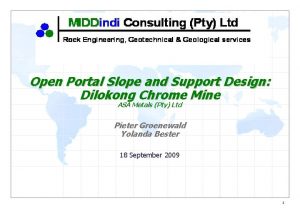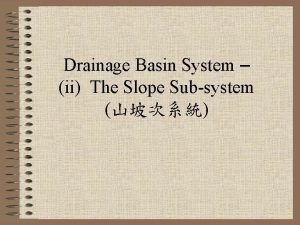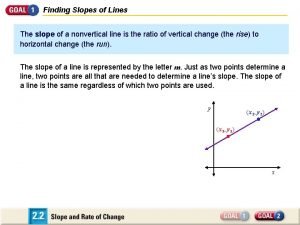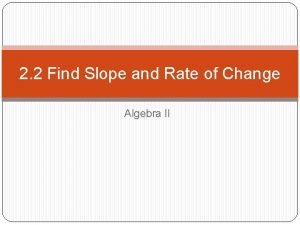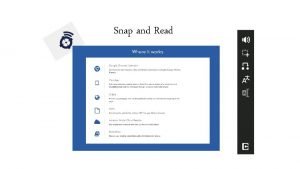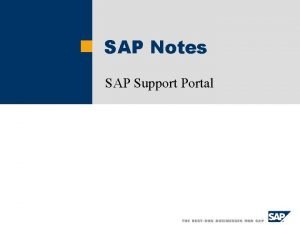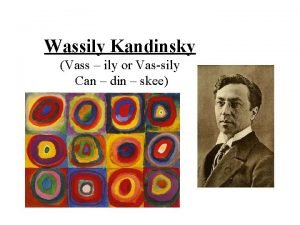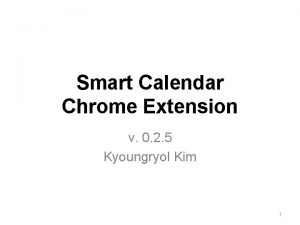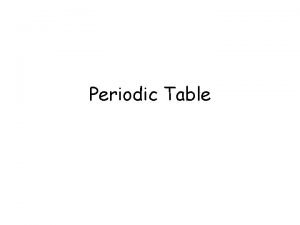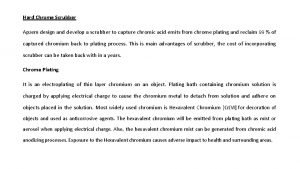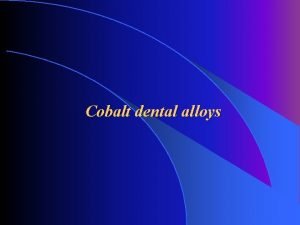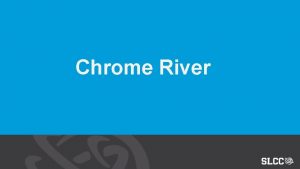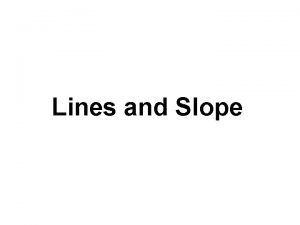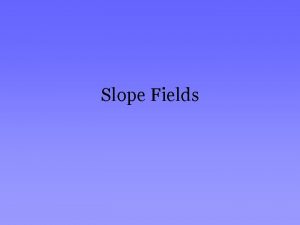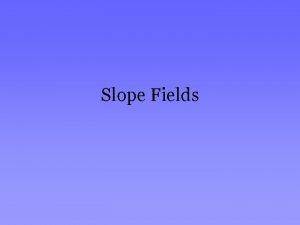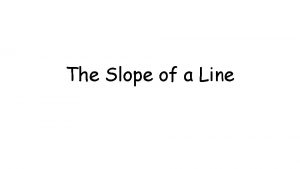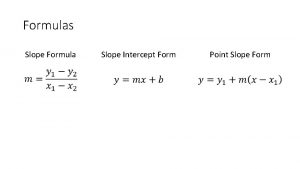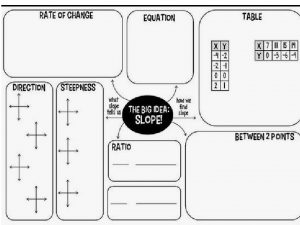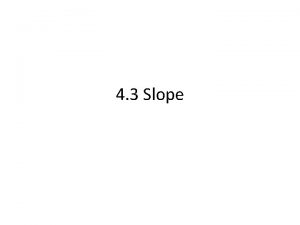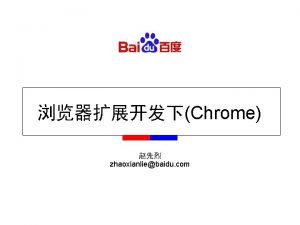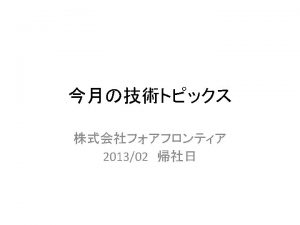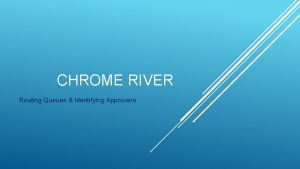Open Portal Slope and Support Design Dilokong Chrome























- Slides: 23

Open Portal Slope and Support Design: Dilokong Chrome Mine ASA Metals (Pty) Ltd Pieter Groenewald Yolanda Bester 18 September 2009 1

Contents § § § § Introduction Location Data Collection Data Processing Input Parameters Numerical Modeling Results Recommendations 2

Introduction § Geotechnical data acquisition § The use of empirical and numerical methods to transform data § Input parameters for FLAC/SLOPE modelling § Probabilistic assessments and kinematic failure analyses. § The portal geometry and support derived 3

Location § The Dilokong Chrome Mine situated on the eastern limb of the Bushveld Igneous Complex (BIC) is planning to exploit the LG 6 A and LG 6 Chromitite seams. 4

Data Collection § Field Work – Core Logging – Joint Orientation – Sample Collection § Laboratory Work – Young’s Modulus – Poisson’s Ratio – UCS 5

Data Processing § § Rock Mass Rating (Bieniawski ‘ 89) Q Rating Statistical Analysis Kinematic Analysis (DIPS and ROCLAB from Rocscience Inc) – Plane Failure – Wedge Failure – Toppling Failure 6

Input Parameters § Laboratory Results § Geotechnical Domains – Soil – Highly Weathered Saprolites – Weathered Pyroxenites – Fresh Pyroxenites § Water Table – Taken at 0. 5 m below surface § Rock Mass Ratings – Uniaxial compressive strength of rock material – Rock quality designation (RQD) – Spacing of discontinuities – Condition of discontinuities – Groundwater conditions – Orientation of discontinuities 7

Input Parameters § Joint Orientations (DIPS) – Circular failure – Plane failure – Wedge failure – Toppling § Support 8

Numerical modelling § ROCLAB § DIPS § Flac – Slope 5. 0 9

Results § Factor of Safety (FOS) 10

Results § Factor of Safety (FOS) § ROCLAB 11

Results § Factor of Safety (FOS) § ROCLAB § Bench Face Angle (BFA) from Flac / Slope – Soil – Weathered Saprolite – Weathered Pyroxenite – Fresh Pyroxenite 12

Results – BFA Soil 13

Results – BFA Saprolite 14

Results – BFA Weathered Pyroxenite 15

Results – BFA Fresh Pyroxenite 16

Results – Fresh Rock CFA Method § The CFA analysis indicates the following: – A BFA of 74º for the Highwall based on plane failure – A BFA of 75º for the Sidewall based on plane failure – A BFA of 64º for the Sidewall based on wedge failure 17

Results § Factor of Safety (FOS) § ROCLAB § Bench Face Angle (BFA) from Flac / Slope – Soil – Weathered Saprolite – Weathered Pyroxenite – Fresh Pyroxenite § Support 18

Support 19

Recommendations 20

Suggested Configurations § Highwall § Sidewalls 21

Actual Configuration 22

Questions 23
 Slope run chrome
Slope run chrome Slope decline and slope retreat
Slope decline and slope retreat Open innovation open science open to the world
Open innovation open science open to the world Point-slope form definition geometry
Point-slope form definition geometry Slope review classifying slope
Slope review classifying slope Slope review classifying slope
Slope review classifying slope Example of major point
Example of major point Snap and read icon
Snap and read icon Angle iron roof truss design
Angle iron roof truss design Sap help notes
Sap help notes Salesforce support portal
Salesforce support portal Qlik support case
Qlik support case Unit 4 portal
Unit 4 portal Ex libris support
Ex libris support Pega0016
Pega0016 Chrome music lab kandinsky
Chrome music lab kandinsky Calendar chrome extension
Calendar chrome extension Chrome veebipood
Chrome veebipood Chromium + oxygen
Chromium + oxygen Google web
Google web Chrome scrubber
Chrome scrubber Chrome update
Chrome update Gst e way bill login problem
Gst e way bill login problem Chrome cobalt alloy in dentistry
Chrome cobalt alloy in dentistry
